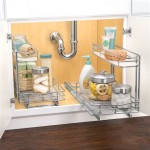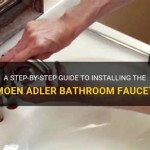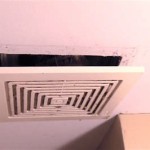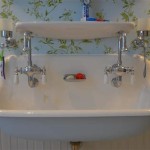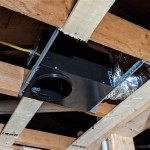Bathroom Sink Valves Won't Turn One Direction: Troubleshooting and Solutions
A common household plumbing issue involves bathroom sink valves that refuse to turn in one direction, typically preventing the user from completely shutting off the water flow or adjusting the temperature as desired. This can lead to wasted water, potential water damage, and general frustration. Understanding the potential causes and appropriate troubleshooting steps is crucial for resolving this problem effectively. The functionality of these valves relies on a relatively simple mechanical design, but mineral buildup, corrosion, and worn-out components can impede their proper operation. A systematic approach to diagnosis and repair can often restore the valve to its intended working order.
Several factors can contribute to a sink valve's inability to turn freely in both directions. Before attempting any repairs, it's important to identify the most likely cause based on the symptoms and the age of the plumbing fixtures. Incorrectly assuming the problem can lead to wasted time, unnecessary parts replacement, and potentially exacerbate the situation. Therefore, a careful evaluation of the valve and its surrounding components is the first step in addressing this issue.
Mineral Buildup: A Primary Culprit
One of the most frequent reasons for a bathroom sink valve's inability to turn is the accumulation of mineral deposits, primarily calcium and magnesium, within the valve mechanism. These minerals are naturally present in most water supplies, and over time, they can precipitate out and solidify on internal surfaces of the valve. This accumulation restricts the movement of the valve stem and other internal components, ultimately preventing smooth rotation in one or both directions. The problem is more pronounced in areas with hard water, where the concentration of these minerals is significantly higher. The buildup typically occurs around the valve stem, the cartridge (if applicable), and the valve seat. This process can be gradual making the valve initially stiff before finally becoming completely stuck.
The extent of mineral buildup can vary depending on water hardness and the age of the valve. Older valves are generally more susceptible due to longer exposure. The type of valve also plays a role; compression valves, cartridge valves, and ball valves each have distinct internal mechanisms that are affected differently by mineral deposits. Compression valves are particularly prone to this issue because the rubber washers used to seal the valve can also degrade and contribute to the buildup. Cartridge valves, while generally more durable, can still experience mineral accumulation around the cartridge and within the valve body. Ball valves, characterized by their simpler design, tend to be less susceptible but are not immune to the problem.
Addressing mineral buildup requires either cleaning the affected components or replacing them entirely. Cleaning typically involves disassembling the valve (after shutting off the water supply) and soaking the parts in a descaling solution, such as vinegar or a commercially available descaling product. A toothbrush or small scrubbing brush can be used to remove stubborn deposits. For severely corroded or damaged parts, replacement is often the more practical and cost-effective solution. Selecting replacement parts that are compatible with the existing plumbing system is critical to ensure proper functionality and prevent leaks.
Corrosion and Component Degradation
Corrosion, especially in older plumbing systems, can be another significant contributor to sink valve problems. Corrosion is the gradual destruction of materials (usually metals) by chemical reaction with their environment. It is a natural process that occurs when metals are exposed to water, air, and other corrosive agents. Over time, corrosion can weaken the valve components, causing them to seize or break. This is more common in areas with acidic water or where dissimilar metals are used in the plumbing system, creating a galvanic reaction.
Different metals corrode at different rates. Brass and copper, commonly used in plumbing, are relatively resistant to corrosion but can still be affected, especially in aggressive water conditions. Iron and steel pipes are more susceptible to rust, which can flake off and further obstruct the valve's operation. Corrosion can manifest as a rusty or greenish buildup on the valve body and internal components. In severe cases, it can lead to leaks and complete valve failure.
Identifying corrosion involves a visual inspection of the valve and surrounding pipes. Look for signs of rust, pitting, or discoloration. If corrosion is present, the affected components should be replaced. Attempting to clean severely corroded parts is often ineffective and can further weaken the metal. When replacing corroded valves, consider using corrosion-resistant materials, such as brass or stainless steel, to prevent future problems. It is also important to ensure proper grounding of the plumbing system to minimize galvanic corrosion, especially when dissimilar metals are used.
Worn-Out or Damaged Internal Components
The internal components of a bathroom sink valve, such as washers, O-rings, and cartridges, are subject to wear and tear over time. These components are designed to create a tight seal and allow smooth valve operation. However, constant use, variations in water pressure, and exposure to chemicals can cause them to degrade, crack, or break. When these components fail, the valve may become difficult to turn, leak, or fail to shut off the water completely.
Specific components and their respective roles include: Washers, typically made of rubber or neoprene, are used in compression valves to create a seal against the valve seat. Over time, these washers can harden, crack, or become compressed, leading to leaks and difficulty turning the valve. O-rings are used in various types of valves to seal the valve stem and prevent leaks. These rings can dry out, crack, or lose their elasticity, causing the valve to become stiff or leak. Cartridges, found in cartridge valves, contain all the moving parts necessary for regulating water flow and temperature. These cartridges can become clogged with debris or develop internal leaks, resulting in difficulty turning the valve or inconsistent water temperature. Ball valves utilize a ball with a hole through it to control water flow. Seals around the ball can wear out over time, leading to leaks and difficulty rotating the ball.
Diagnosing worn-out components often involves disassembling the valve and inspecting the individual parts. Look for signs of cracking, swelling, or deformation. If any damaged components are found, they should be replaced with new ones of the same size and type. It is essential to use high-quality replacement parts that are designed for the specific valve model. When replacing cartridges, be sure to match the brand and model number to ensure proper compatibility. Regularly inspecting and maintaining the sink valves can help prevent premature failure and extend the lifespan of the components. This can be done by occasionally turning the valves fully on and off to prevent them from seizing up, and by lubricating the valve stem with a silicone-based grease to maintain smooth operation.
In conclusion, addressing the issue of bathroom sink valves that won't turn properly in one direction requires a thorough understanding of the potential causes, including mineral buildup, corrosion, and worn-out components. A systematic approach to diagnosis and repair, coupled with the use of appropriate tools and materials, can often restore the valve to its intended functionality. In some cases, it may be necessary to consult a qualified plumber if the problem is complex or beyond the scope of homeowner expertise.

11 Types Of Main Water Shut Off Valves Explained

Types Of Under Sink Shutoff Valves Kitchen Infinity

Compression Vs Quarter Turn Shut Offs

How To Install Shut Off Valves The Home Depot

Should The Dial Turn Water Valves Be Fully Open In Your Home Doityourself Com Community Forums

Sharkbite 1 2 In Push To Connect X 4 O D Compression Chrome Plated Brass Quarter Turn Angle Stop Valve 23336 0000lf The Home Depot

1 4 Quarter Turn Angle Shut Off Valve Premium Residential Valves And Fittings Factory

How To Change Tap Direction And Water Pr Bunnings Work Community

The 10 Most Common Plumbing Mistakes Diyers Make

How To Find The Water Shut Off Valve For A House Forbes Home
Related Posts

